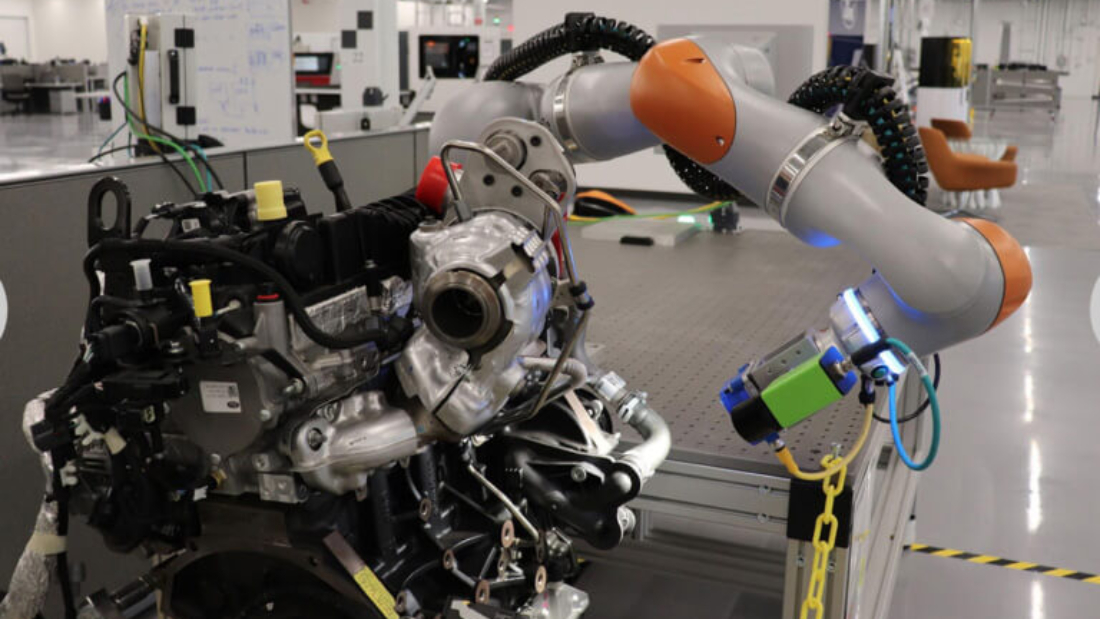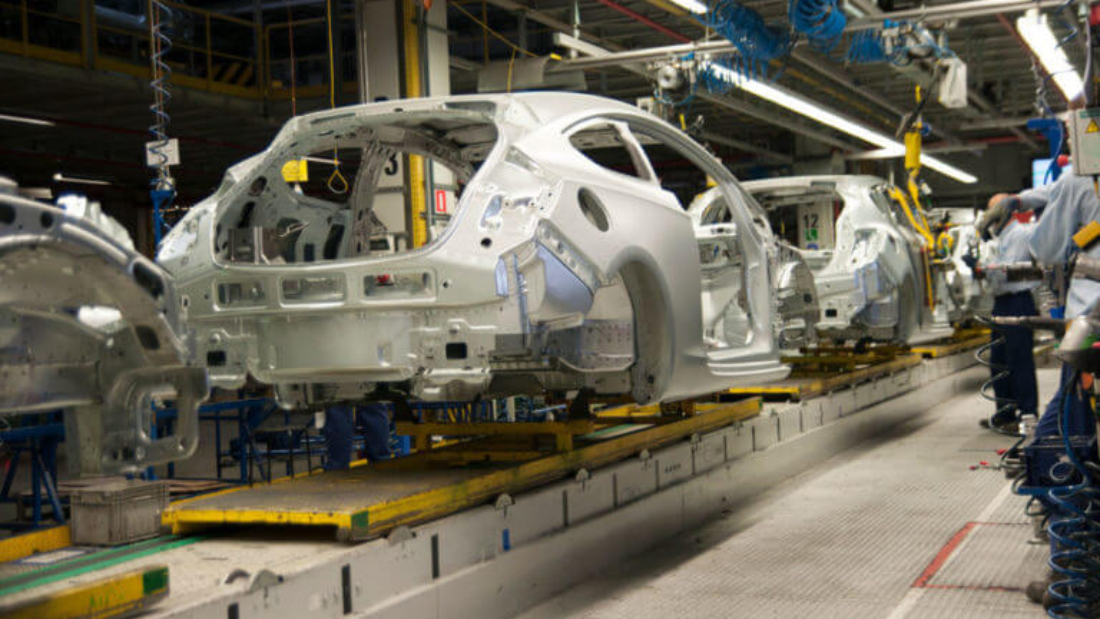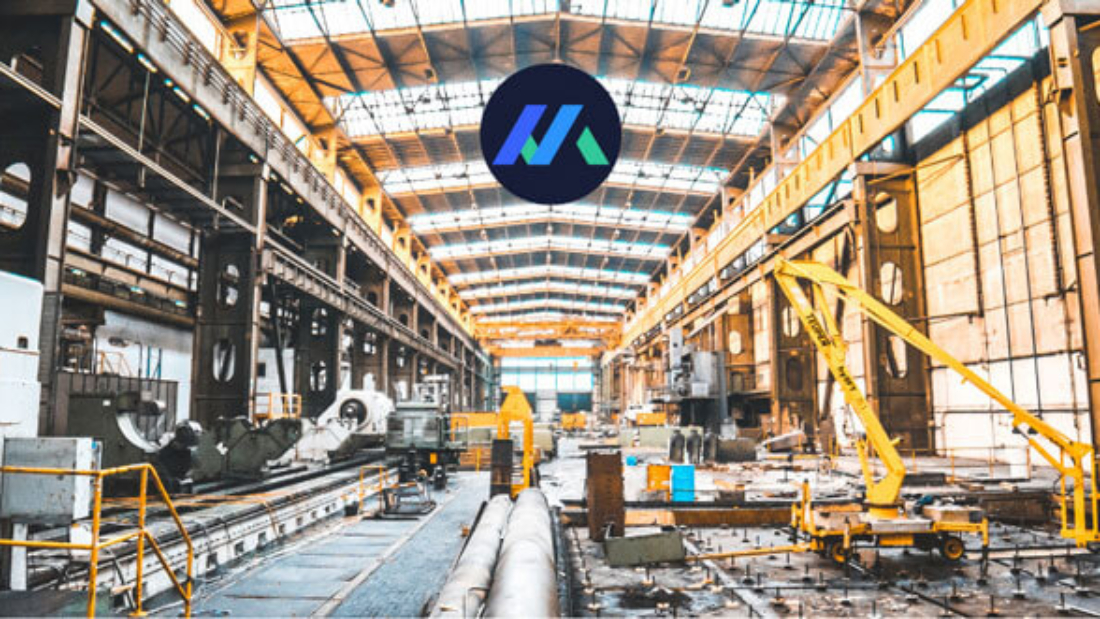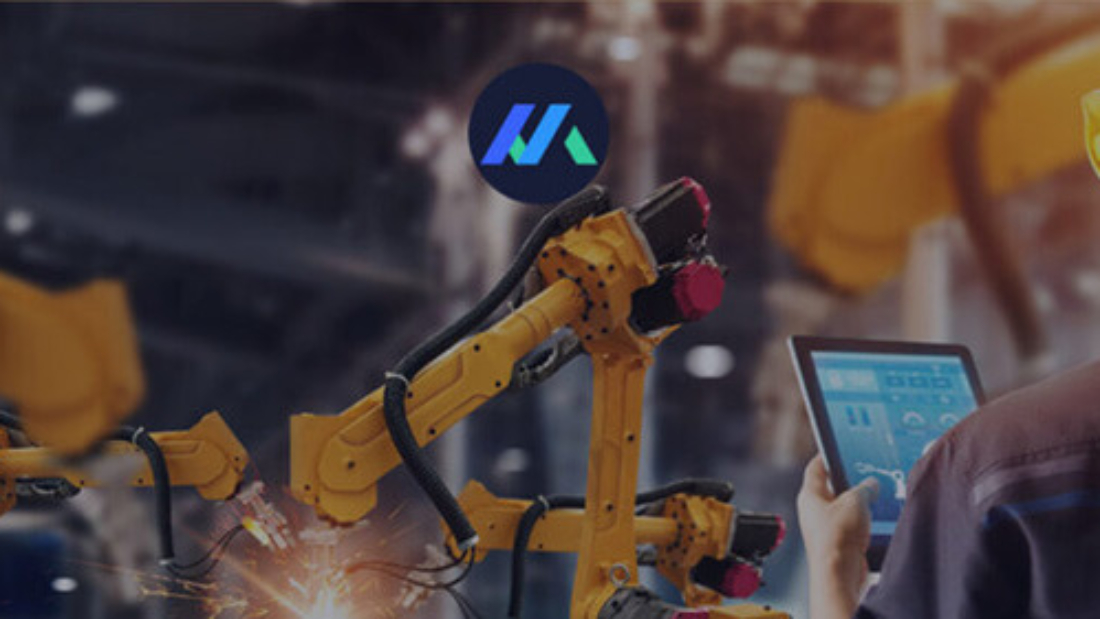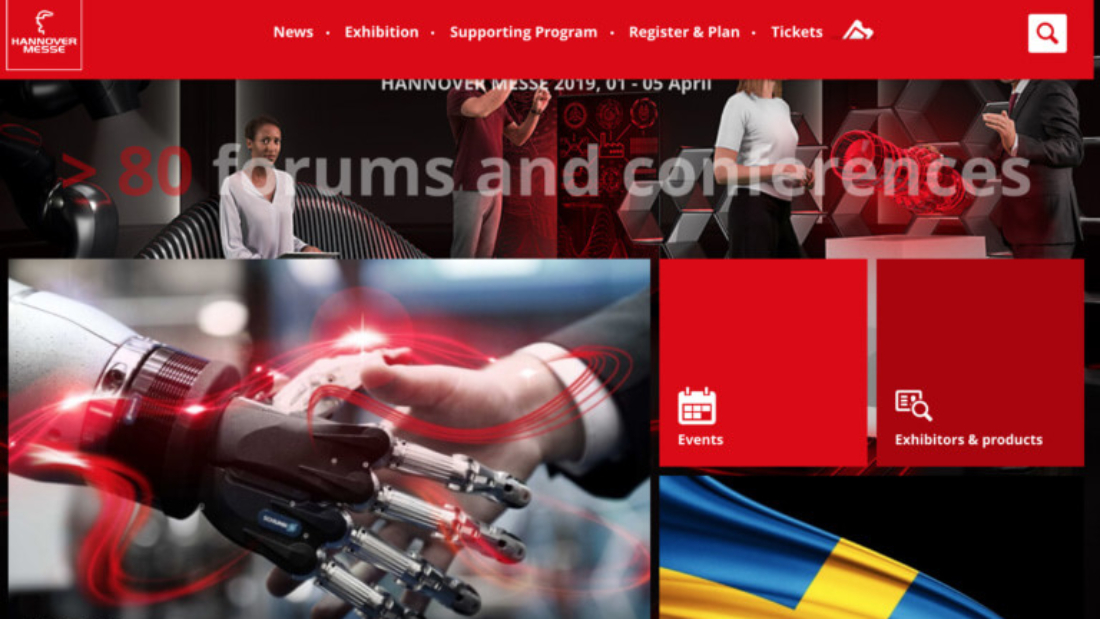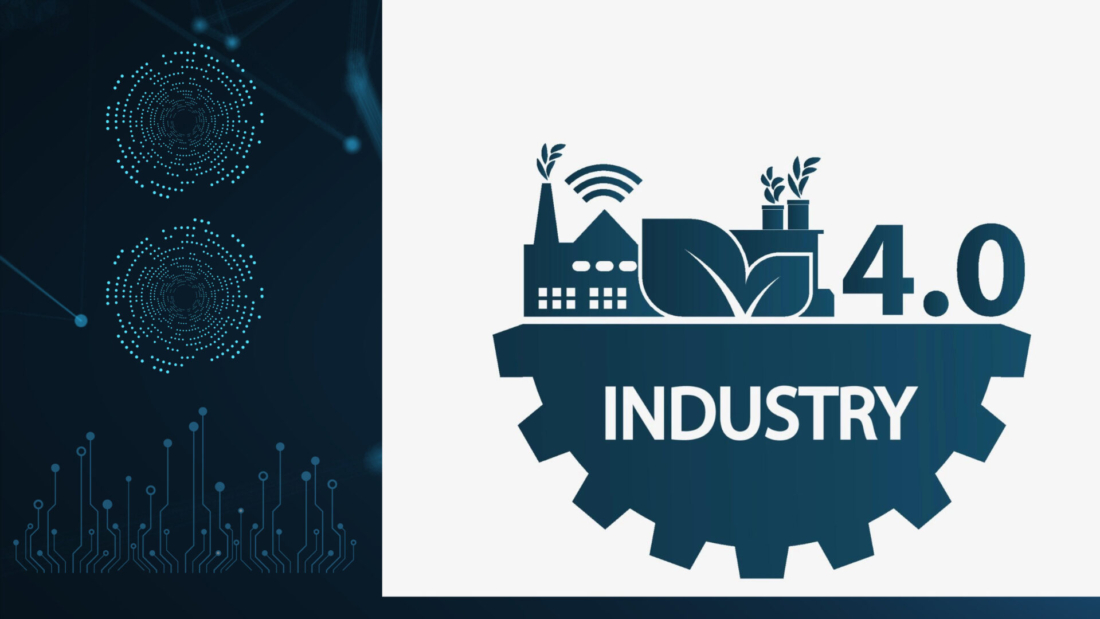#smartmanufacturing: right here, right now – don’t miss the slideshow on Ford’s new Advanced Manufacturing Center.
We are building Porsches here
Do you get this question often – “How frequently will our customers use the analytics tool?”
Absolut use cases of ML in Supply Chain Management
Artisan products can be key differentiators for their manufacturers and as we at #codedataio see more manufacturers going the artisan route, it becomes all the more important to use automation in decision support in order to squeeze out more with less
Lighthouse factories – Origin, Progress, best practices and road ahead
What are Lighthouses?
During The World Economic Forum’s 13th Annual Meeting, added ten new factories to the Lighthouse Network, a WEF initiative launched in 2018 in collaboration with McKinsey to identify and highlight manufacturers at the forefront of implementing technologies enabling the Fourth Industrial Revolution. The term “lighthouse” refers to the fact that these factories can serve as beacons for the many thousands of others worldwide that are still attempting to implement technologies such as artificial intelligence, additive manufacturing, and advanced analytics, as well as overcome challenges associated with upgrading existing production systems.
There are currently 90 ‘Lighthouses,’ the world’s most sophisticated enterprises that are paving the way for the Fourth Industrial Revolution’s acceptance.
Lighthouse Progress with Industry 4.0
Manufacturing has endured a decade of stagnant productivity and fragmented demand; hence, innovation is long overdue. Where Fourth Industrial Revolution innovations have been scaled beyond the pilot stage, remarkable efficiency gains have occurred with little job displacement.
However, the majority of businesses seem to be trapped in “pilot purgatory.”
These lighthouse factories illustrate how forward-thinking technology engagement may result in a better, cleaner world via increased production efficiency. Similarly, they demonstrate how Fourth Industrial Technology used at scale has the potential to revolutionize the nature of work through upskilling and engaging human employees while minimizing displacement.
Three technology megatrends – connectivity, intelligence, and adaptable automation—are driving a Fourth Industrial Revolution paradigm change in manufacturing:
- Connectivity: establishes connections between isolated network nodes, boosting visibility
- Intelligence: automatically recognises and interprets events for decision-making
- Flexible automation: Incorporates reaction mechanisms, automation, and remote mobility
Adoption of technology at a large scale may have a profound effect on companies. A closer examination of one of these three megatrends demonstrates how potent this influence may be.
Lighthouse Best Practices
-
Scalability is a possibility.
The use of 4IR technologies at a large scale is essential for long-term development. But, what exactly is the key to growing success? The vast majority of businesses are stuck in pilot purgatory, unable to go forward because of antiquated working methods or a lack of innovation.
What strategies have lighthouses used to effectively navigate the Fourth Industrial Revolution? The solution is twofold: agility and the development of the workforce.
First and foremost, these organizations have adopted agile methods of working. As a result, they have been able to deploy 4IR technologies throughout their production networks and value chains quite fast. Because lighthouses have transformed their operations to optimize flexibility and adaptation, they have created an environment that encourages new thinking and dynamic methods. This allows for greater sensitivity to variations in supply, demand, and consumer expectations, among other things.
Second, lighthouses take the advancement of their employees seriously. Workers are more prepared and more productive in a 4IR environment when they get training, reskilling, and upskilling—which includes teaching new skills for future occupations. With a focus on inclusive development, lighthouses ensure that people remain at the core of their 4IR transitions, ensuring that operators have the chance to reach their full potential in order to construct the inventive, creative future at the heart of redesigned industry. Effective employee involvement is critical to effective scaling, and scaling is crucial for 4IR technologies to achieve rapid development and expansion.
2. Agility is Critical
The agile technique is seeing a rebirth in manufacturing. This is particularly true for lighthouses. While agile may be applied in a number of ways, the lighthouses’ view of agile is characterized by a focus on cross-functional cooperation and rapid, continuous iteration. The agile approach was implemented across that impacted various dimensions
Systems for managing business processes
- Individual systems
- Internet of Things/Data Systems
Each lighthouse incorporates at least twenty digital technology use cases. Each of these use cases originated as a small-scale pilot or a single building component and matured only via extensive testing and iteration. Investment in Human Capital must be made in conjunction with investment in technology. Lighthouses engage in employee transformation. Various human-centric techniques were employed:
- Empowering frontline employees with the ability to innovate via the use of technology and data
- Proactively developing technical and soft competencies, as well as managing talent development
- Restructuring the organization to facilitate Industry 4.0 transition
- Adopting new modes of operation, such as agile, and increasing transparency
- Automating and technologically enhancing routine assembly and operating duties
- Enhancing frontline problem-solving and teamwork
Lighthouses that invested extensively in their employees had increased employee engagement and project success
3. Sustainable (Green) Manufacturing
Three of the Lighthouses are named Sustainability Lighthouses, which will recognize factories and value chains that have achieved advances in sustainability and productivity.
Incorporating cutting-edge technologies such as robots and artificial intelligence, more than half of all the network’s factories are making a difference in the future of manufacturing and environmental sustainability by transforming their operations.
For example, a consumer healthcare firm is combining sophisticated controls with green technology to deploy a sensor-fed automated system to reduce energy usage, resulting in a 25 percent decrease in energy consumption and an 18 percent reduction in CO2 emissions, according to the company.
However, profitability and sustainability do not have to be mutually exclusive. As sustainability becomes an increasingly relevant problem in manufacturing, it’s critical to recognize that these measures are often beneficial to the company.
4.IoT architecture designed for scalability—
The lighthouses have an IoT architecture that is designed for scalability and interoperability. All data is centralized in a single data lake, and application interfaces are standardized.
For eg – Micron’s high-volume advanced semiconductor memory manufacturing facility created an integrated Internet of Things (IoT) and analytics platform to help it lead the next wave of efficiency improvement. In addition to allowing production abnormalities to be recognized in real-time, automated root-cause analysis allows for faster new product ramp-up by 20%, reduced unplanned downtime by 30%, and increased labor efficiency by 20%.
What is ahead for manufacturers?
To prevent greater inequality, public and private leaders must behave responsibly. They can shape the Fourth Industrial Revolution and reduce risks by being proactive.
Workplaces should employ technologies that augment rather than replace human operators, allowing them to concentrate on tasks that need their distinctive human talents of decision-making and adaptation to new conditions.
To develop a mobile workforce that can profit from the Fourth Industrial Revolution’s potential, the commercial and public sectors must retool education systems and engage in training as well as lifelong learning.
Technologies should be widely distributed across regions and involve SMEs – So firms should spread Fourth Industrial Revolution technology throughout their whole supply chain, including emerging economies and small suppliers. This will not only increase overall outcomes but also knowledge distribution.
Solve the climate change problem using 4IR technologies— According to a recent IPCC estimate, emissions must be reduced by 45 percent by 2030 to keep global warming below 1.5°C. So enterprises should use #Industry40 technologies to save energy, enhance productivity, minimize waste and emissions, and improve overall competitiveness.
According to ARC and other studies, many Industry 4.0 initiatives never go past a pilot in one walled portion of the company, preventing organizations from achieving true digital transformation. Mads Lauritzen, managing partner, North Asia Industrial IoT Hub, cited statistics that 71% of organizations generate an isolated use case, 26% generate use cases related to a location, and only 3% generate use cases transforming the company.
We need to get out of our comfort zones. Leaders must take a lead from these Lighthouse factories and create blueprints for Digital transformation.
How can Makoro assist?
Makoro™ optimizes industrial supply chain processes by offering continuous insight through Makoro™ Mind, the data-driven core that utilizes IoT, Digital Twin, artificial intelligence, and advanced analytics to make recommendations that improve operations performance.
Additionally, Makoro™ leverages the customer’s current infrastructure (with no preference for Edge, Cloud, or On-Premise) and integrates easily with the customer’s existing private/public/hybrid cloud, on-premise, and edge systems.
The Recommendations Dashboard showcases Makoro™’s continuing value to customers’ operations by linking the real-time asset, maintenance, and workforce metrics with recommendation sentiment, acceptance, confidence, relevance, and novelty.
Industry 4.0 for the Indian Manufacturing Supply Chain
The global manufacturing industry is amidst a massive transformation that encompasses the entire supply chain. The previous industrial revolution was a giant step in modernizing the industry, but the impact of Industry 4.0 is seen to be much larger. It is the process whereby the automated industry of Industry 3.0 is geared towards digitization and creating smart industries. It entails the usage of connected assets, IIoT, Digital Twins, Data, Artificial Intelligence, and Advanced Analytics to improve the efficiency, transparency, and consistency of the overall supply chain.
How is Industry 4.0 relevant for India?
- Bridge the Gap between Supply and Demand: The population of India is on an upward growth curve and so is the consumption rate, which tends to rise further each day, thereby putting tremendous demand pressure on the manufacturing industries. At the same time, this increases the gap between demand and production capacity. To bridge this increasing gap and increase productivity, manufacturing in India must adopt newer technologies. Productivity gaps identified by analysis of comprehensive and real-time data from production processes are the first step towards understanding the current state of the systems. This can be further improved through the adoption of predictive and prescriptive technologies.
- Eliminate Waste: Industry 4.0 uses real-time data and artificial intelligence to improve production operations. The real-time data provides updated information about the functioning of the machinery. It helps in optimizing the timing for the purchase and storage of raw materials, thereby eliminating wastage. It also helps in identifying malfunctioning machinery and gives timely information for their maintenance, preventing high wear and tear, and ensuring the best utilization of raw materials. Industry 4.0 is a multi-pronged approach for waste elimination and sustainable production.
- Improve Quality: Before the fourth industrial revolution, the quality check was aimed at maintaining the flaws in the products limited below a certain threshold. The process itself was heavily reliant on the quality check personnel. The data available, even though abundant, was not put to use and stored away for later analysis, which was never performed. But with Industry 4.0, the real-time data provides the exact checkpoints for products, improving quality continuously.
- Enhance Customer Satisfaction: India is a diverse nation. As a result, products have significant variations due to consumer preferences. Multiple factors such as culture, age, language give rise to ever-changing and evolving consumer preferences in the same time-space. This poses a challenge to manufacturers to produce personalized products. Demand for personalized products is growing – and appears to stick on. We all seem to want products personalized and right-sized to fit our preferences, personalities, and lifestyles. This is a trend that OEMs can’t afford to ignore. Manufacturers must implement strategies to meet this new demand for customization. Industry 4.0 technologies lead in the direction of agile, small-batch, personalized manufacturing, to deliver products customized to specific consumer personalization requirements, thereby enhancing customer satisfaction.
- Increase collaboration among manufacturers, startups, and research institutions: Industry 4.0 relies heavily on the knowledge workforce. Its success is driven by active collaboration among manufacturers, researchers, and startups. India, with its technology boom and the startup ecosystem, already has a skilled workforce to cater to the needs of innovation in the manufacturing supply chain. At the same time, there is also plenty of active research in technologies like Computer Vision, Artificial Intelligence, Process Optimization, and such. Bringing together startup innovation and advanced research can deliver immense value to the adoption of Industry 4.0 in the manufacturing supply chain in the country. This collaboration will also diversify the economic base of the nation.
- How can Makoro™ help?
MakoroTM drives process optimization in the manufacturing supply chain by delivering continuous intelligence through Makoro™ Mind, the data-driven core which leverages IoT, Digital Twin, AI, and advanced analytics to recommend solutions that make assets perform better.
Moreover, Makoro™ leverages customer’s existing infrastructure (without any bias for Edge, Cloud, or On-Premise). It deploys seamlessly across customer’s existing private/public/hybrid cloud, on-premise, and edge systems.
The Recommendations Dashboard demonstrates the continuous value of Makoro™ to customer’s processes, correlating asset, maintenance, and workforce metrics in real-time with sentiment, acceptance, confidence, and relevance of recommendations.
Take our 10 day outcome challenge and see the results.
A Smart Manufacturing architecture
A bottoms-up architecture proposal for #industry40 to simplify OT architecture with #mqtt.
Following Industry 4.0 @ Hannover Messe
#codedataio is following #hannovermesse2019 for applications of #industry4_0 and #machinelearning
Effective Supply Chain Communications
Lack of communication is a fundamental issue plaguing supply chains. And as #digitalsupplychain evolves into #digitalsupplynetwork in the era of #smartmanufacturing, this issue becomes more visible and has bigger impact. Siloed reports and dashboards (and too many of them) make matters worse.
Advancement in Industry 4.0
Industry 4.0, also known as the Fourth Industrial Revolution, is ushering in a paradigm shift that will profoundly change the way we work, live, and interact affecting both industrialized and developing economies.
How does Industry 4.0 Impact the Current Industry?
The physical, digital and virtual worlds are intertwining, resulting in the development of Smart Factories, products, and practices. The most recent industrial revolution, known as Industry 4.0 not only aims to increase industrial structures’ adaptability, compliance, and durability but also enhance their 21st-century efficiency.
All these elements capture real-time information from industrial organizations. IoT, AI, and Digital Twin are the primary areas of Industry 4.0, which intends to significantly boost the productivity of industrial technology.
Modern businesses require productivity and comfort in managing the full Product Life cycle (PLC) in order to compete in today’s fiercely competitive market environment. Innovative predictive maintenance is made possible by IoT, and these cutting-edge technologies generate a significant amount of industrial data.
Industry 4.0 will have the greatest impact on manufacturing systems, supply chains, and industrial activities. Therefore, the construction of smart factories will have a significant impact on production processes and operations, allowing for greater operational flexibility and more efficient resource utilization.
Skill development, which will result in demographic and societal changes, is one of the most important fundamental factors for the successful acceptance and implementation of the Industry 4.0 framework.
In the future work vision, this new industrial paradigm will significantly impact the labor market and professional roles, and it will be critical to ensure that more jobs are generated than are lost.
Success Stories with Industrial 4.0 Technologies:
Innovation and scientific advancements are critical in businesses, industries, and countries. However, as technology advances and interconnectivity grows, businesses are expected to operate on Industry 4.0 systems using the applications of Artificial Intelligence, the Internet of Things(IoT), Digital Twin, and Big Data.
Artificial Intelligence – Traditionally, AI has meant using computers to mimic human intelligence, but the term has recently expanded to include “analytics” and “big data”. Sensor-enabled operations are generating massive amounts of data that can be mined using AI techniques to uncover previously unknown relationships between processing conditions and outcomes, which can then be used to improve process design and control.
Success story: Process automation is in charge of using production management software or robotic machines to automate complex processes in manufacturing. Robotic Process Automation (RPA) is a technology that uses AI-based software to handle high-volume repetitive tasks that previously required a human workforce.
These tasks can include recording maintenance, answering queries, performing calculations, etc. A French multinational company decided to use RPA to eliminate tasks that added no value (such as automating document preparation etc.) As a result, the company was able to save time for their employers, allowing them to refocus on activities aimed at customer satisfaction.
Digital Twin: Digital twins are virtual replicas of processes, production lines, factories, and supply networks created by industries as a result of digital transformation.
Digital twins are becoming a business necessity, allowing data analysis and system monitoring to head off problems before they occur, preventing downtime, developing new opportunities in a cloud-based system, and even planning for the future using simulations, Think of a digital twin as a bridge between the physical and digital worlds.
Success story: According to research and markets, the digital twin market is expected to grow to $36 billion by 2025. A growing number of healthcare organizations will aid this trend. The concept of digital twins is already being used to improve the quality of COPD treatment.
By incorporating digital twins into treatment, doctors can visualize medical responses to a specific condition without administering medication. Even before a doctor or nurse sees the patient, the data is entered into an EHR (Electronic Health Record), creating a digital twin with historical data and diagnosis reports.
The data points from the digital twin are then studied and analyzed to arrive at an accurate diagnosis for ongoing treatment. Health-centric sensors are sometimes integrated with the digital twin model, which tracks the health vitals and disease progression.
As a result, digital twins can identify a pattern that will influence how the medical condition is treated.
Big Data: The impact of Industry 4.0 big data on manufacturing is expected to grow and create new opportunities. Production, supply chain, and sustainability would be impacted to increase business efficiency and profitability and improve decision-making.
Success story: One of the US-based manufacturers and distributors of electronic test tools and software has helped clients in improving asset maintenance by providing maintenance teams with solutions that can effectively analyze crucial asset information in real-time.
They have ensured reactive and preventative equipment maintenance based on real-time asset data rather than a predefined calendar. As a result, the client’s asset maintenance has improved, and maintenance costs have greatly dropped.
Additionally, the second-largest airplane manufacturer in the world chose to integrate Big Data technologies into their business practices despite producing 6000 turbine fan blades annually and producing 3 petabytes of data annually.
Engine Health System controls the RR engines (used by more than 500 civil and 150 military entities worldwide), employing up to 100 parameters at any given time. This data is recorded in the flight recorders and examined after the flight.
Internet of Things (IoT) platforms: The term “Internet of Things” (IoT) refers to any device that can collect data, transmit it over the internet, and connect to other devices. According to a report, between 1992 and 2018, the average price of a sensor dropped by more than 90% (from $22.00 to $1.40), while microprocessor clock speeds increased by a factor of 991. (from 29 million to 28,751 million Hz). This convergence of cost reduction and increased processing speed has enabled the vision of a vast array of interconnected sensors on machines, people, and products that can take actions based on real-time sensor readings.
Success story: One of the companies in Amsterdam built a smart IoT-powered office building for the global audit with 28,000 sensors that sends resident-generated data for adjusting the building’s efficiency.
To boost workplace productivity, sensors track employee movements and activities and direct them to the most available or convenient working spaces via a dedicated mobile application.
This way, the workspaces are distributed evenly and rationally, so that the staff does not waste time looking for an unoccupied meeting room at the last minute.
Industries need to use the latest technologies for their production processes not only to go to market faster but also to reap the following benefits:

Implementation of Industry 4.0 is Not Without Challenges:
Many manufacturing companies are embracing Industry 4.0 technologies, but they are not without challenges. I dare you to go a day in the manufacturing industry without hearing the phrase “Industry 4.0.” And, in an age when most businesses are aiming for digital transformation, it stands to reason that manufacturing technologies are evolving to fully encompass both automation information and data exchange.
However, many businesses continue to struggle with successful adoption; for example, according to Industry Week, two out of every three companies piloting digital manufacturing solutions fail when scaling up to large-scale deployment.
Industries have to cope with many real-time manufacturing issues such as breakdowns or slow-down equipment, efficiency crisis, disruptions of flows, etc.
Many businesses may face the following challenges and risks as they implement Industry 4.0.

Industry 4.0 is on a Growth Path:
According to Forbes Business insights, the global Industry 4.0 market size was estimated by Fortune Business Insights to be at USD 114.55 billion in 2021. According to projections, the market for Industry 4.0 will increase from $130.90 billion in 2022 to $377.30 billion in 2029.
Take a look at the global market of Industry 4.0:

Makoro™ helps accelerate the Industry 4.0 Journey:
Makoro™ uses IoT, Digital Twins, Artificial Intelligence, and Advanced Analytics to continuously give insights and recommendations that optimize industrial supply chain processes.
Makoro™ uses AI & advanced data analytics to formulate asset performance management recommendations in the natural language of the user so they can easily understand and act upon the recommendations. This enables faster, better, and more compliant decision-making.
Schedule a call to talk more about your needs and how we can help. 15 minutes is all it takes.
Sustainable Power Generation for Climate Change Mitigation
Our modern society is significantly shaped by the production of power since it supplies the energy required to support economic progress and raise living standards. However, conventional power generation techniques like burning fossil fuels have significantly increased greenhouse gas emissions, accelerating climate change. As a result, switching to cleaner and more sustainable power producing techniques has become crucial. This article gives a quick summary of how #electricity generation and climate change mitigation are related, highlighting the major policies and innovations promoting the transition to a low-carbon future.
The Landscape of Power Generation:
The production of electricity is a varied industry that uses a range of resources, including nuclear energy, biomass, solar, wind, hydro, and geothermal energy, as well as fossil fuels (coal, oil, and natural gas). Fossil fuels’ abundance and high energy density have made them the predominant source for a long time. But because of their widespread use, greenhouse gas emissions—primarily carbon dioxide (CO2), a significant driver of climate change—have increased.
The burning of fossil fuels emits significant volumes of CO2 and other greenhouse gases into the atmosphere, trapping heat and contributing to climate change. Rising sea levels, severe weather, the loss of biodiversity, and changes to ecosystems are just a few of the negative repercussions brought on by this occurrence. Therefore, lowering the sector’s greenhouse gas emissions is essential for combating #climatechange.
Solar #powergeneration captures solar energy and transforms it into electricity. The creation of inventive solar panel designs and higher affordability are the results of technological developments. Additionally, solar power systems can deliver a steady and dependable energy source even during times of low sunlight thanks to energy storage innovations like batteries.
Inventories of Greenhouse Gases:
When fossil fuels like coal and natural gas are burned, conventional power plants, especially those that use those fuels, produce a significant amount of CO2. Climate change is a result of the atmospheric buildup of GHGs, which is a result of these emissions. Reduced or completely eliminated #ghgemissions from fossil-fuel-based electricity generation represent the challenge. The largest portion of greenhouse gas emissions are produced by the transportation industry. The primary source of transportation-related greenhouse gas emissions is the combustion of fossil fuels in our automobiles, trucks, ships, trains, and airplanes. Petroleum makes up more than 94% of the fuel used for transportation, mostly in the form of gasoline and diesel.
The emissions from the production of energy utilized by other end use sectors, such as industry, account for the second-largest share of greenhouse gas emissions produced by electricity. 79% of the energy we use comes from burning #fossilfuels.
The pressure on power generation systems is a result of the rising demand for electricity brought on by population increase, urbanization, and industrialization. Additional power facilities are frequently needed to meet this demand, and when they use fossil fuels, they increase GHG emissions. It is extremely difficult to balance the need for electricity with emission reductions.
A lack of infrastructure for carbon capture and storage (CCS) technologies, which collect CO2 emissions from power stations and store them underground to prevent atmospheric release. To achieve meaningful emission reductions, it is difficult given the limited deployment of CCS infrastructure. #ccs technology must be scaled up and put into use if GHG emissions from power generation are to be reduced.
Gross U.S. greenhouse gas emissions have dropped by just over 2% since 1990. Due in major part to the effects of the coronavirus (COVID-19) pandemic on travel and other economic activity, there was a significant decrease in emissions in 2020. Compared to the levels in 2020, U.S. greenhouse gas emissions rose 5% in 2021. Again, due to the economic recovery following the peak of the COVID-19 pandemic, increased CO2 emissions from the burning of fossil fuels in 2021 were a major factor in the rise in overall greenhouse gas emissions. In 2021, CO2 emissions from fossil fuel combustion increased by 7% relative to the previous year. CO2 emissions from natural gas consumption increased by less than 1%, CO2 emissions from coal consumption increased by 15%, and emissions from petroleum use increased by 9%.
Switching to renewable sources:
The solution is to switch from fossil fuel-based power generation to renewable energy sources like solar, wind, hydropower, and geothermal energy. The carbon footprint is greatly reduced by these energy sources because they provide electricity without releasing GHGs. Encouraging the adoption of renewable sources needs investments and incentives from governments and corporate organizations to encourage adoption. Many nations with little resources may find the initial expense intimidating, and many will require financial and technical support to make the shift.
However, spending money on green energy will pay off: reducing the effects of pollution and climate change by 2030 could generate annual savings of up to $4.2 trillion.
Furthermore, by diversifying the alternatives for power supply, efficient, dependable renewable technologies can make a system less vulnerable to market shocks and enhance resilience and energy security.
But, reducing GHG emissions requires increasing energy efficiency in power generation. Many power plants run with inefficient conversion rates, wasting energy and producing more emissions. Modern technology can be used to retrofit existing plants and create brand-new ones that are more energy-efficient overall and have less environmental impacts.
Additionally, for the purpose of capturing and storing #co2emissions from power plants, scaling up CCS technology is essential. Governments and business must spend money on R&D to increase the effectiveness and affordability of CCS systems. The implementation of CCS infrastructure can be encouraged and emission reductions accelerated by establishing policies and financial incentives. Globally, nations and businesses have made commitments to reach net zero by 2050. A group of technologies generally known as carbon capture, utilization, and storage (CCUS) provides answers for a number of challenging industries like cement, aviation, and the creation of hydrogen from fossil fuels.
However, for countries to meet their net-zero obligations, global CCUS consumption must increase by 120 times from current levels by 2050, reaching at least 4.2 gigatons per year (GTPA) of CO2 captured.
Intermittency of Renewable Energy Sources:
Due to variables including weather patterns, nocturnal cycles, and seasonal fluctuations, renewable energy sources are known for their variability and intermittency. While wind power depends on wind speeds, solar electricity depends on the amount of sunshine available. As a result, there are times when renewable energy production is high and low, which can lead to grid imbalances. To ensure grid stability and a consistent supply of power, the problem is in managing and integrating intermittent renewable energy sources efficiently into the grid.
This intermittency results in grid stability and reliability challenges, which can cause swings in the amount of power available. Unexpected generation shifts can result in voltage and frequency imbalances, which could result in equipment damage or power outages. To guarantee a steady supply of electricity, grid operators must address these issues.
Moreover, energy storage and grid infrastructure are necessary for the integration of sporadic renewable energy sources. Batteries, pumped hydro storage, and thermal storage are examples of energy storage systems that can store excess energy during times of high generation and release it during times of low generation, so providing a steady supply of electricity. However, there are issues with these storage systems’ scalability and cost-effectiveness that must be addressed.
Three key elements driving the adoption of renewable energy sources are:
- Investment in energy storage technologies: It is also essential to create energy storage technologies that are both effective and affordable if intermittency is to be reduced. When renewable energy production is high, energy storage systems can store excess amounts and release them when it is low. Intermittency can be managed to a large extent by improvements in battery technology, grid-scale storage options, and upcoming technologies like hydrogen storage.
The CEOG Renewtable® power plant in French Guyana, which was just announced, will be the first in the world to produce 100% renewable baseload electricity using solar and hydrogen technology. a ground-breaking effort that will create a reliable roadmap for the use of renewable energy in the future. The power station, which is situated in the commune of Mana in French Guyana, marks the emergence of renewable energy in a region where a sizable share of electricity is produced from fossil fuels. The facility will be able to support the needs of a growing population and provide electricity to around 10,000 households year-round, uninterrupted, and at a reasonable price compared to the current diesel plants, thanks to its 128MWh of stored energy. Since #hydrocarbons account for a major portion of the electricity generated in Guyana at the moment, this will also help to decarbonize the country’s energy mix.
2. Flexible power generating methods, such as hydroelectric power or natural gas-fired power plants, may serve as a backup or supplement to intermittent renewable energy sources. When renewable energy production is fluctuating, these adaptable power generation sources can quickly ramp up or down their output to maintain a steady supply of electricity.
3. Improved Grid Management and Forecasting: Smart grid technology and predictive analytics are two advanced grid management technologies that can help with the integration and control of intermittent renewable energy sources. Forecasting of renewable energy production that is accurate and based on previous data and weather trends also helps in eliminating grid imbalances.
Bottom line:
Power generation has a sizable contribution to climate change, but it also offers a chance to lessen its effects. To reduce GHG emissions and meet climate change mitigation goals, electricity generation must shift from fossil fuels to renewable energy sources. The main forces behind this change are technological improvements, grid integration, supportive regulations, and investments in sustainable energy infrastructure. We can pave the way for a greener, more resilient future and lessen the negative consequences of climate change on our world and future generations by embracing sustainable power generation strategies.
The use of renewable energy is already gaining ground in many nations. In the United Kingdom, for instance, the proportion of renewable production increased from 6.9% in 2010 to 37.1% in 2019. Photovoltaic (PV) and wind power are examples of renewable energy sources that are intermittent and low-output. This small-scale generation is widely dispersed throughout and integrated into power systems.
Schedule a call to learn more about how Makoro™ can help you improve efficiency by creating a more sustainable future.


